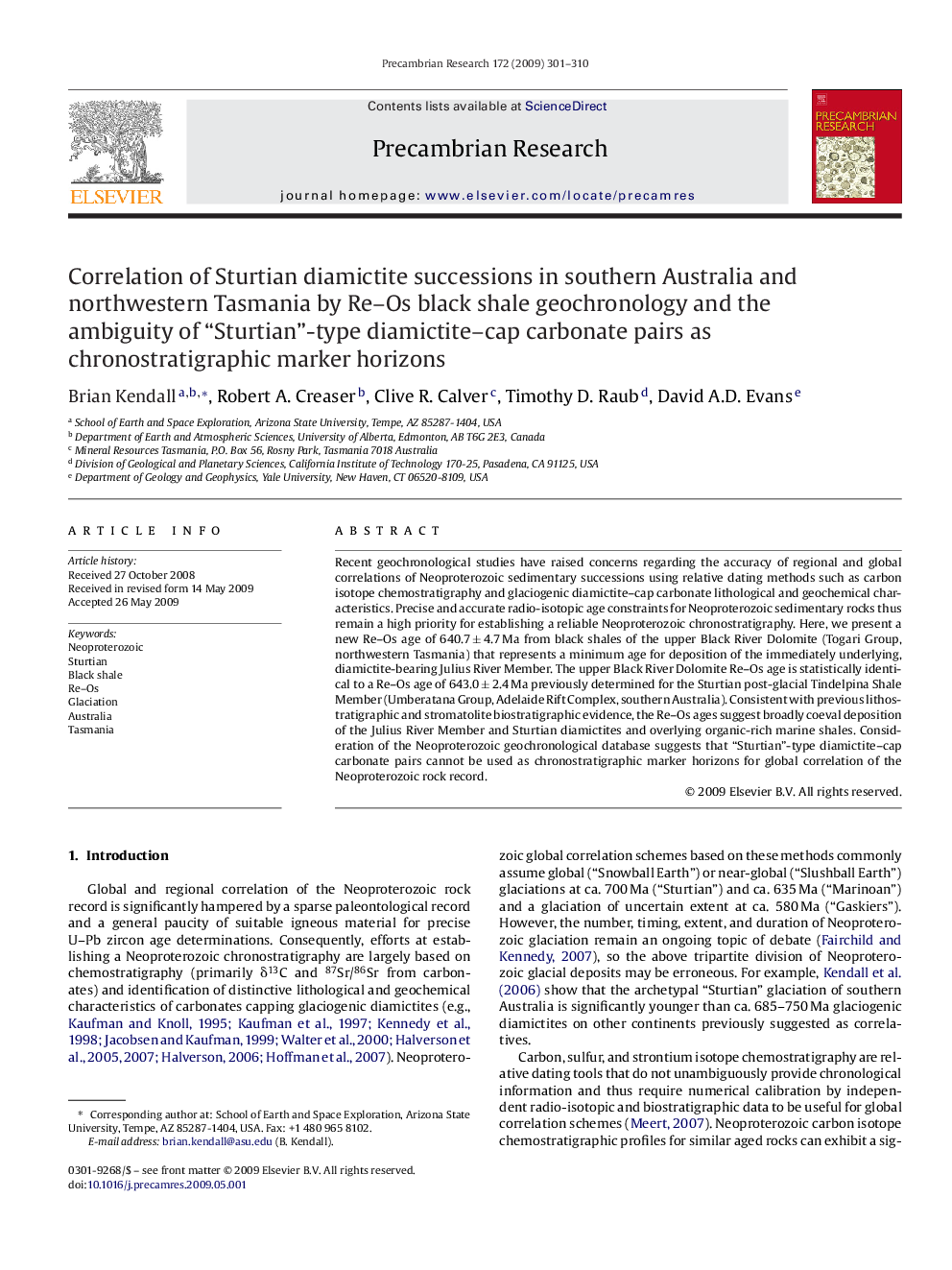| Article ID | Journal | Published Year | Pages | File Type |
|---|---|---|---|---|
| 4723995 | Precambrian Research | 2009 | 10 Pages |
Abstract
Recent geochronological studies have raised concerns regarding the accuracy of regional and global correlations of Neoproterozoic sedimentary successions using relative dating methods such as carbon isotope chemostratigraphy and glaciogenic diamictite-cap carbonate lithological and geochemical characteristics. Precise and accurate radio-isotopic age constraints for Neoproterozoic sedimentary rocks thus remain a high priority for establishing a reliable Neoproterozoic chronostratigraphy. Here, we present a new Re-Os age of 640.7 ± 4.7 Ma from black shales of the upper Black River Dolomite (Togari Group, northwestern Tasmania) that represents a minimum age for deposition of the immediately underlying, diamictite-bearing Julius River Member. The upper Black River Dolomite Re-Os age is statistically identical to a Re-Os age of 643.0 ± 2.4 Ma previously determined for the Sturtian post-glacial Tindelpina Shale Member (Umberatana Group, Adelaide Rift Complex, southern Australia). Consistent with previous lithostratigraphic and stromatolite biostratigraphic evidence, the Re-Os ages suggest broadly coeval deposition of the Julius River Member and Sturtian diamictites and overlying organic-rich marine shales. Consideration of the Neoproterozoic geochronological database suggests that “Sturtian”-type diamictite-cap carbonate pairs cannot be used as chronostratigraphic marker horizons for global correlation of the Neoproterozoic rock record.
Related Topics
Physical Sciences and Engineering
Earth and Planetary Sciences
Geochemistry and Petrology
Authors
Brian Kendall, Robert A. Creaser, Clive R. Calver, Timothy D. Raub, David A.D. Evans,
